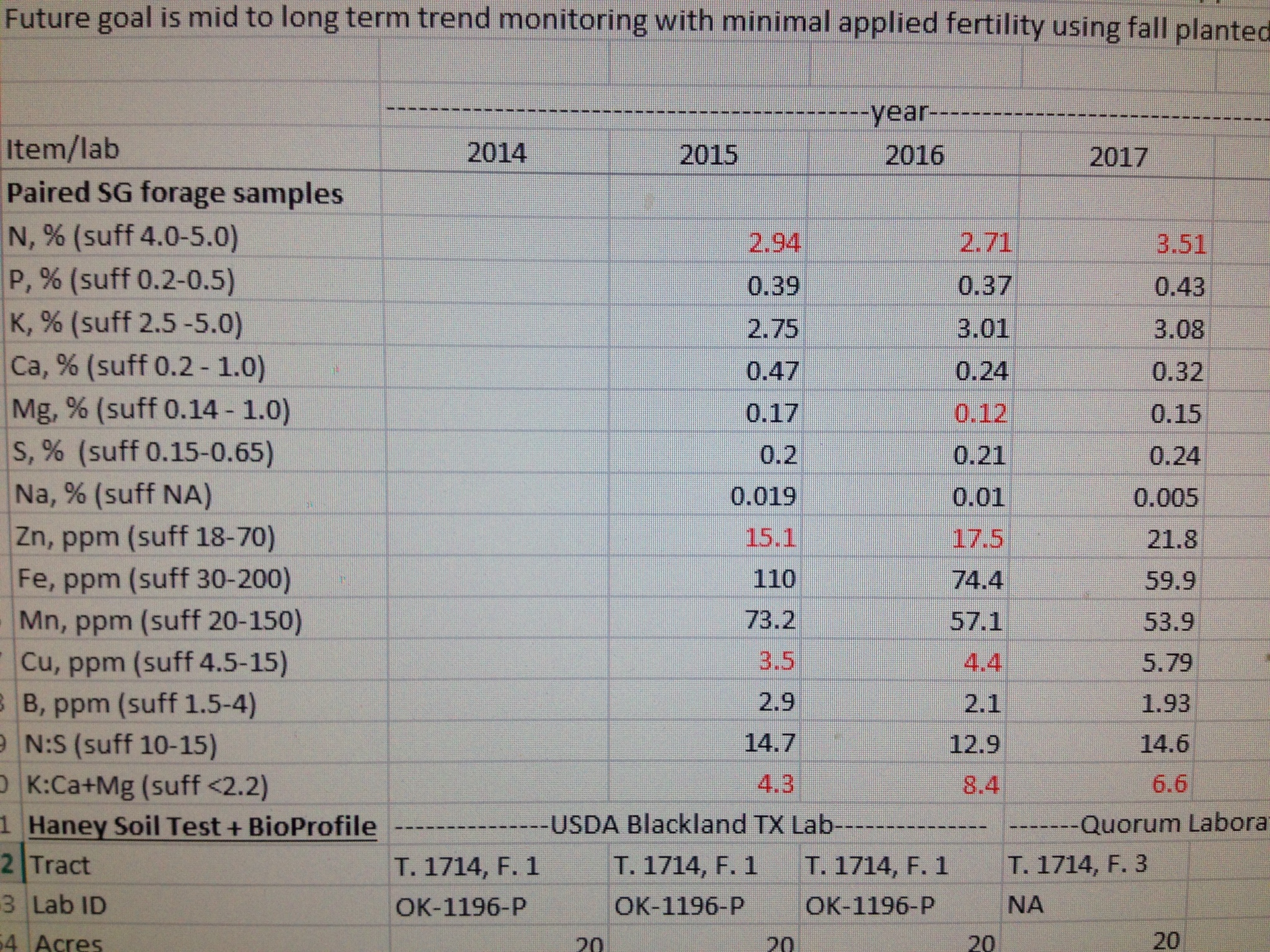Tenured Student
Active Member
Based on Dr. Craig Harper's latest book, he recommends apply borax to clover plots to account for Boron deficiencies- especially in sandy soils. 1) does anyone do this? 2) if so, when do you apply?
My ag adviser tells me that Boron is a trace mineral found in most soils that is vital for plant growth, but rarely deficient unless the soil hasn't been in agriculture for a while. Either way, a soil test is key in determining the specific needs for your crops. Soil tests can seem like just an extra hassle that is easy to push off, but are a cheap must have to avoid throwing money away on things your soil doesn't need and neglecting what the plants are starving for. Fertilizing without a soil test is like taking medication without knowing what your illness is.
How easy is it to incorporate 1 lb over an entire acre? Pellet? Powder?One of the best thing to do for alfalfa in most areas. I do per soil test I believe 1#/ac. Doesn't take much. Last time I bought Borax on sale at a Dollar General. Typically coops don't have just boron except mixed with fert which usually includes N which I dont want. I apply spring in May and if I have time again in fall.
I soil test every year and this year had to test several fields for nematodes. The soils at my family's farm are predominant sandy loam with little topsoil. I just received my results and have a boron deficiency. I am very new to the micro-nutrient amendment game.
Here are the pics
Soil test data

Small grain forage test data

Sent from my iPhone using Tapatalk
Why don't you spend a few more $$ testing and a little less time reading the book before deciding on boron or other elements. I highly respect Harper but he hasn't stepped a foot on your place...correct?
Standard chemical soil tests for trace elements (TM) are not accurate because a big part of trace metal uptake by plants is due to microbial species diversity and microbial activity in concert with plant root signals within organic complexes in soil...your local COOP or Extension service tests DO NOT measure soil biology....further soil biology testing is rather expensive! One needs to ask the plant what it contains under good to ideal growing conditions before deciding on soil amendment plans...and stop asking the soil lab what the soil needs! The most applicable way I know of in terms of both valid data and economics to assess TM soil status is to sample plant tissue, have it analyzed by a forage testing lab (likely the one running your soil tests), and compare your results to nutrient sufficiency tables which are published on the web for free. Myself and other consultants still rely on plant sampling before writing soil fertility recommendations. I take a hand clipped sample of small grain forage right around the soil probe when stabbed in the ground, put the sample in paper bag, then take the soil core to avoid contaminating forage with soil particles. The cost for analyzing the forage sample is $18 from a nationally certified testing program.....N and 11 other elements are measured. You can also sample white clover or red clover or any other plant for which there are nutrient sufficiency data in the free tables. I do this once each spring only on 16 sample reference points spread over 20 ac and keep this data in a spreadsheet for NRCS and consultation cooperator purposes. One composite soil and forage sample is submitted to the lab. Pictures in post below are current from that spreadsheet (the soil test data for this year has not arrived yet). BTW....I had the forage test data in 2 days after sampling last week! Look closely....soil test data would indicated deficiency while the forage test indicated sufficiency.
How easy is it to incorporate 1 lb over an entire acre? Pellet? Powder?
